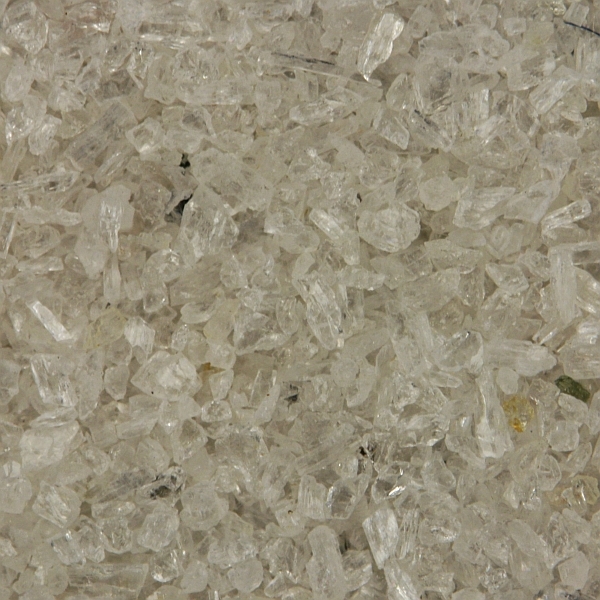Spodumene is a fascinating mineral. It is one of the pyroxenes. This is a family of minerals which give black color to basalt. Spodumene, however, is anything but black.

Industrial concentrate of spodumene crystals. The crystals are typically prismatic and they have clear vertical striation (runs parallel to the longer axis of crystals). The concentrate is from the Talison Lithium Mine in Australia. The mineral is extracted there from pegmatite which is uniquely rich in spodumene — about 50% of the rock is composed of this mineral.
I like this mineral as a good example that neither the color nor the chemical composition (which determine the color) are important in general silicate mineral classification. It is structure that matters. We take a look at the chemical composition only to separate one mineral (spodumene, diopside, jadeite, etc.) from another inside a mineral group, but not to distinguish one mineral group (pyroxene, amphibole, garnet, tourmaline, etc.) from another.
Why isn’t it black like most of its more abundant relatives? Because it contains no iron. And no magnesium. This mineral is a lithium pyroxene, its chemical composition is LiAlSi2O6. It forms long chains just like all other pyroxenes and has therefore prismatic habit.
Is it common in sand? No, not really. It is not even common in rocks. Still, there is one rock type in which it is not rare. This rock is very interesting too because it contains often rare minerals. It is pegmatite. Pegmatite is a coarse-grained igneous rock that crystallized deep inside the crust from the late magmatic liquid that contained lots of chemical elements that didn’t fit into the crystal structure of common minerals. Hence, pegmatites often contain rare minerals (spodumene, tourmaline, beryl, lepidolite, etc.) that contain rare elements (lithium, fluorine, boron, uranium, rare earths, tantalum, niobium, etc.). There is another reason why it isn’t a common mineral in sand. It is not stable in the weathering environment.
Spodumene, although not very common, can sometimes grow crystals with enormaous dimensions. Crystal more than 10 meters long and 65 tons in weight was found in Etta Mine, South Dakota, USA. Spodumene has several uses. It is an industrial mineral that is mined for its lithium content. That’s the stuff we need to make batteries for our computers. Fortunately, it is not the only source of lithium we have. Most of it is extracted from brines as lithium carbonate.
Do you know about the Etta Mine in the South Dakota Black Hills?
‘huge crystals of spodumene are mixed at every possible angle like toothpicks in a translucent gel (quartz). In 1904, a crystal 42 feet long and 3 feet by 6 feet in cross section was found…The crystal weighed about 65 tons.’
There is a web page about the mine at giantcrystals.strahlen.org/america/etta.htm
Yes, it is Etta Mine but I didn’t specifically search for it. My source underestimated the weight of the biggest crystal. Thanks for the link. I am not surprised that the owners of the mine do not welcome visitors.